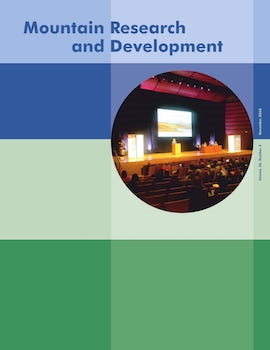Migration is increasing in the middle hills of Nepal, and it has diverse consequences for the people remaining behind, their livelihoods, and the way they manage their land. This study explored the complex and interrelated effects of migration on land and people in the Harpan watershed, Kaski District, western Nepal. Surveys and focus group discussions were used to explore the reasons for decisions on land management and migration. In addition, remote sensing and fieldwork were used to map the extent of land abandonment. Our study found that almost three quarters of the households have at least 1 migrant member receiving on average US$ 206 per month in remittances. Remittances were used mainly for food and goods and to a much lesser extent for agriculture. In addition to international migration, substantial migration occurs within the area. Once livelihoods permit, whole families choose to migrate to market areas, from uphill to downhill communities. This has led to land abandonment and an increase in forest cover in the upper part of the watershed and has also increased pressure on the land and exposure to flooding in the lower part.
How to translate text using browser tools
1 November 2016
The Effects of Migration on Livelihoods, Land Management, and Vulnerability to Natural Disasters in the Harpan Watershed in Western Nepal
Stéphanie Jaquet,
Gitta Shrestha,
Thomas Kohler,
Gudrun Schwilch
flood
land management
land use
left-behind population
livelihoods
migration
Nepal





